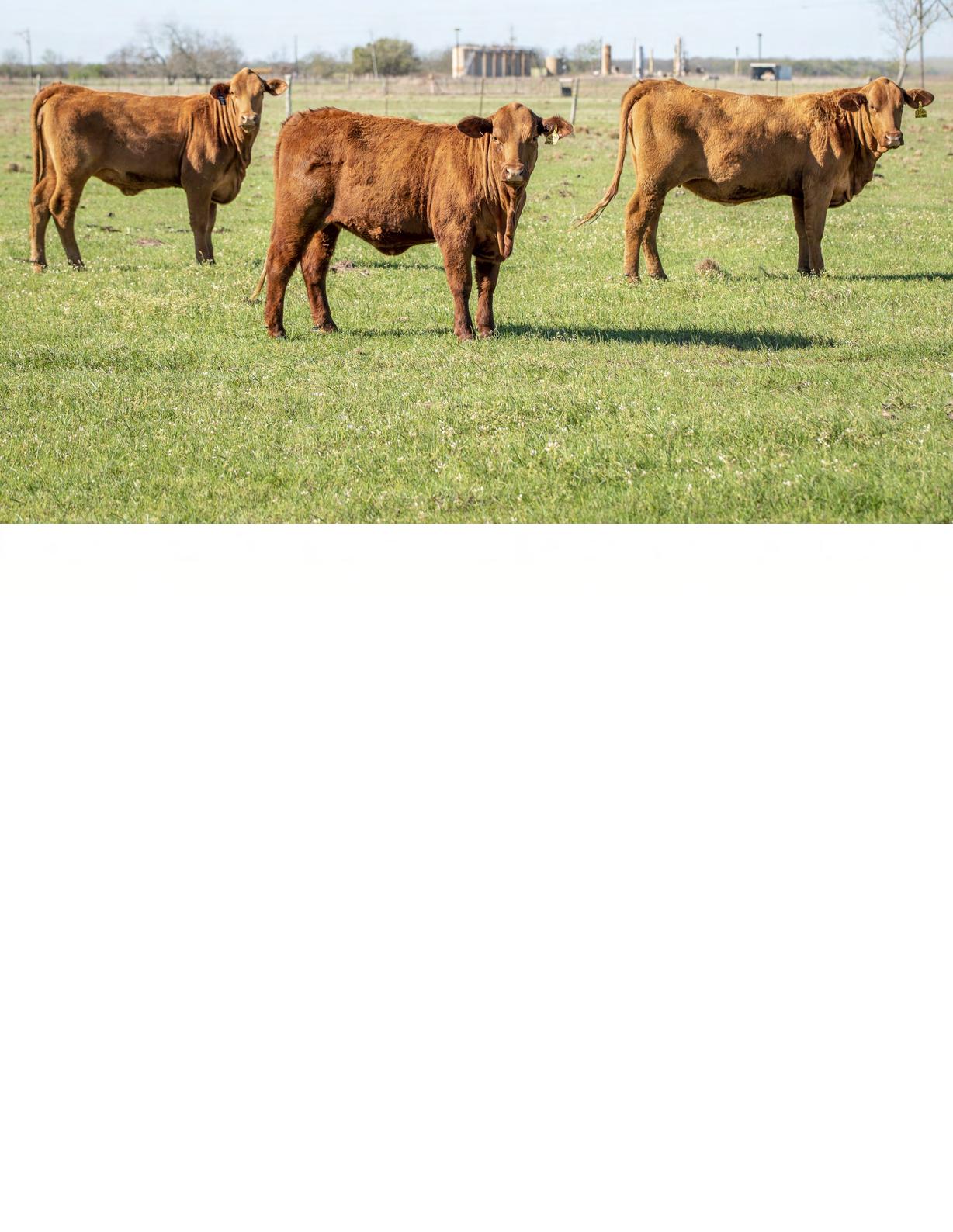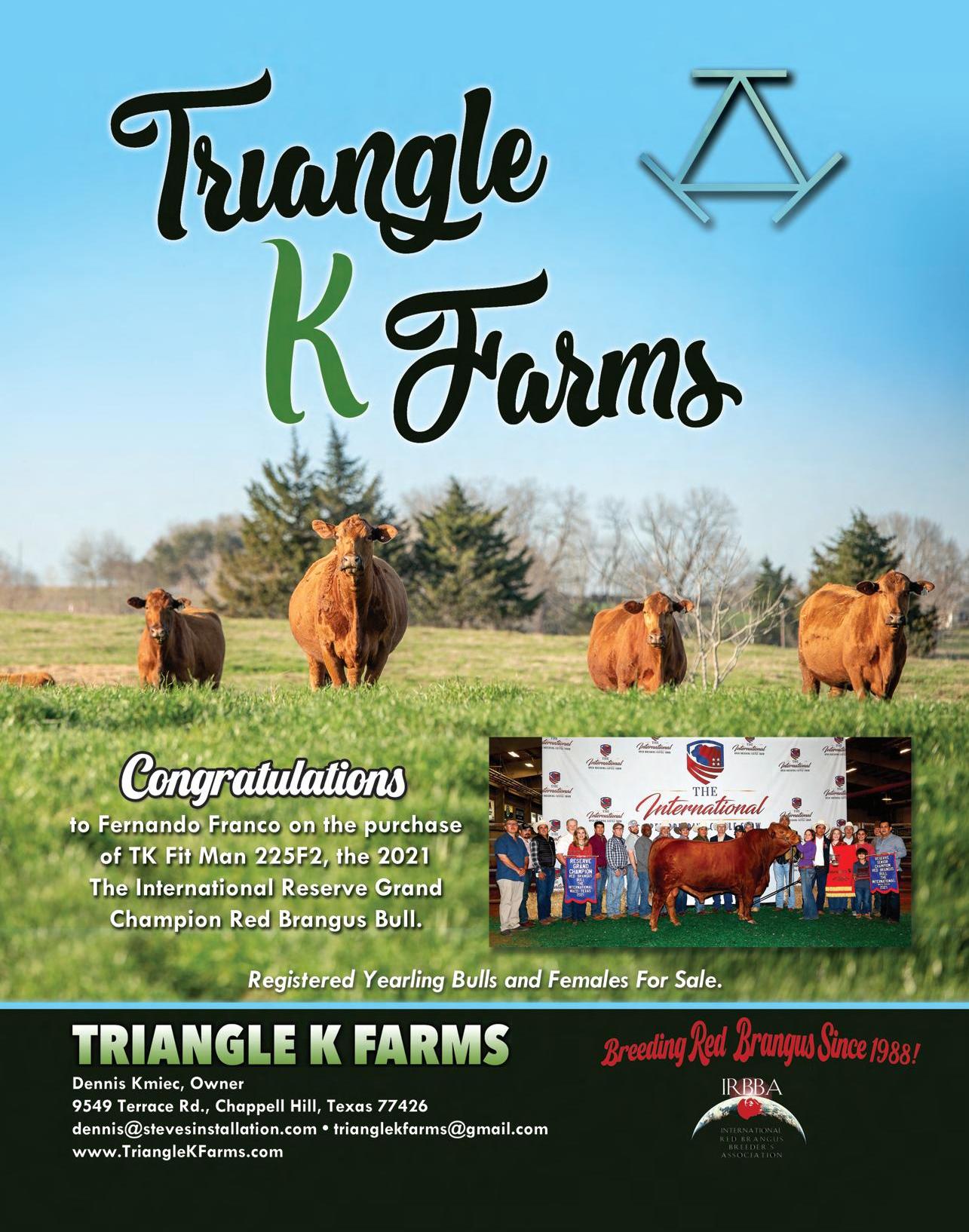
2 minute read
REPRODUCTION REPORT
LET’S TALK TEMPERAMENT: EFFECTS ON REPRODUCTIVE EFFICIENCY
by Carson Anderson, graduate research assistant, University of Missouri-Columbia
THE EFFECTS OF TEMPERAMENT
There are many traits that can be selected for or against to improve reproductive efficiency in a cow-calf operation. Temperament is one of many traits that has a direct impact on reproductive performance; however, it is a trait that is often put on the back burner and overlooked. Selecting for or against temperament may seem like just another nitpicky management strategy; however, research has shown that poor temperaments lead to a significant decrease in productivity and profitability.
Temperament is defined as the behavioral responses of cattle when exposed to human handling. Cattle that express excitable temperaments during handling have been observed to have a reduction in pregnancy rates to artificial insemination compared to their more docile herd mates. Additionally, excitable temperaments may hinder puberty attainment among heifers. In addition to reproductive performance, an excitable temperament may decrease weaning weight, average daily gain, and carcass quality. Most importantly, selecting against cattle with poor temperaments lessens the chance of stress and injury to both the handler and animal during handlings.
Research has shown that Bos indicus-influenced cattle tend to have a more excitable temperament than Bos taurus cattle; therefore, management of temperament might be a trait of greater significance among Bos indicus-influenced females.
METHODS TO IMPROVE TEMPERAMENT
Due to the negative impacts of stress on reproductive success and overall productivity, consider culling females with poor temperament. Temperament is reported to be moderately to highly heritable, suggesting much progress can be made through selection and culling decisions. Additionally, animals with poor temperament may condition excitable temperaments in herd mates.
Heifers can be acclimated to human handling to improve their natural temperament prior to breeding. Heifers that have been properly acclimated are more likely to re-enter a chute willingly and quietly. While acclimating heifers to handling has been proven to successfully improve temperament, the same acclimation procedures tend to fail in mature cows. So, when handling heifers through facilities, take the opportunity to focus on low-stress handling. With this perspective, handling heifers multiple times to use estrus synchronization and perform AI could even be a net benefit in acclimating heifers.
In addition to culling and acclimation, practicing good stockmanship can directly influence temperament. As mentioned previously, temperament is the response of cattle when exposed to human handling; therefore, poor stockmanship can condition poor temperament, as cattle are most likely to remember negative handling experiences. Practicing low-stress handling may mitigate excitable temperaments and improve overall productivity and performance.
TEMPERAMENT TAKEAWAY
Bos indicus-influenced females tend to have a more excitable temperament than Bos taurus females. Poor temperaments can lead to decreased reproductive performance, negatively impacting overall productivity. When considering strategies to optimize reproductive efficiency, consider both selecting selection for temperament and management strategies to acclimate heifers to handling.













